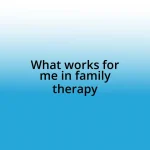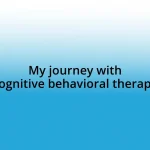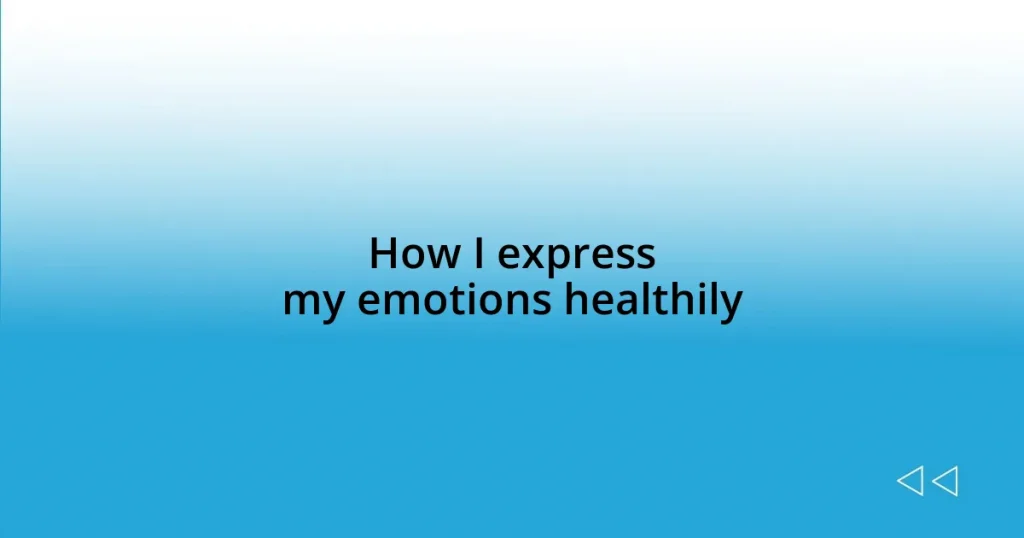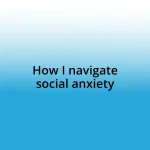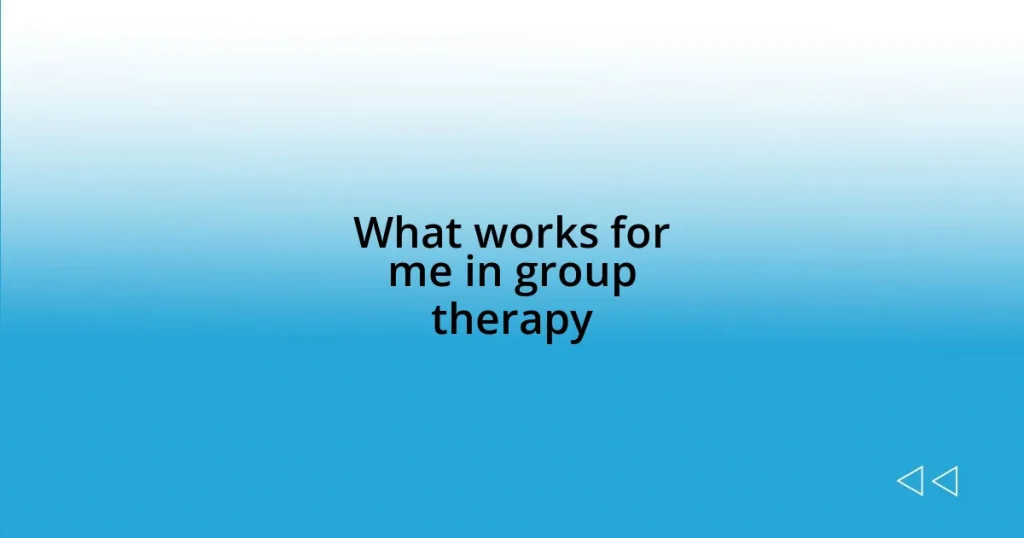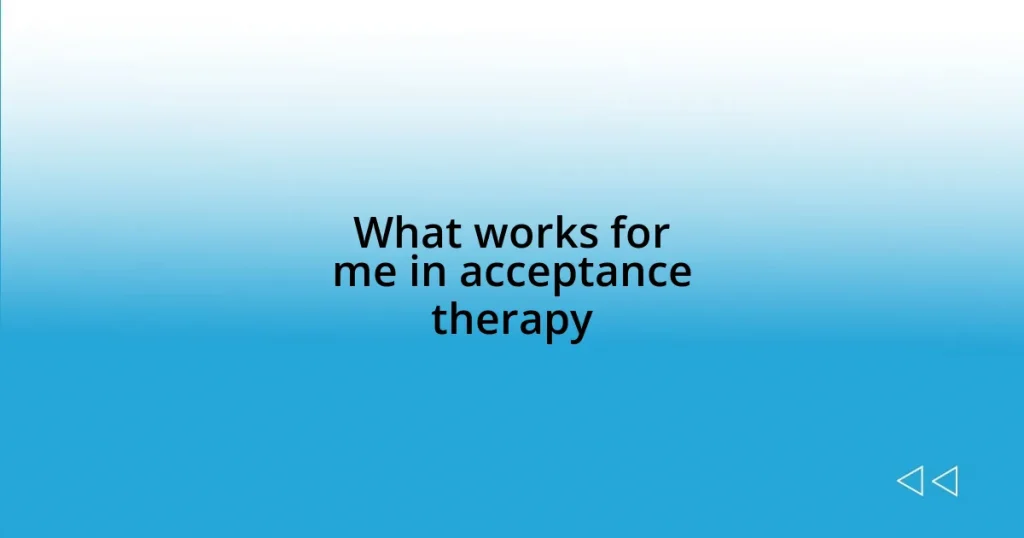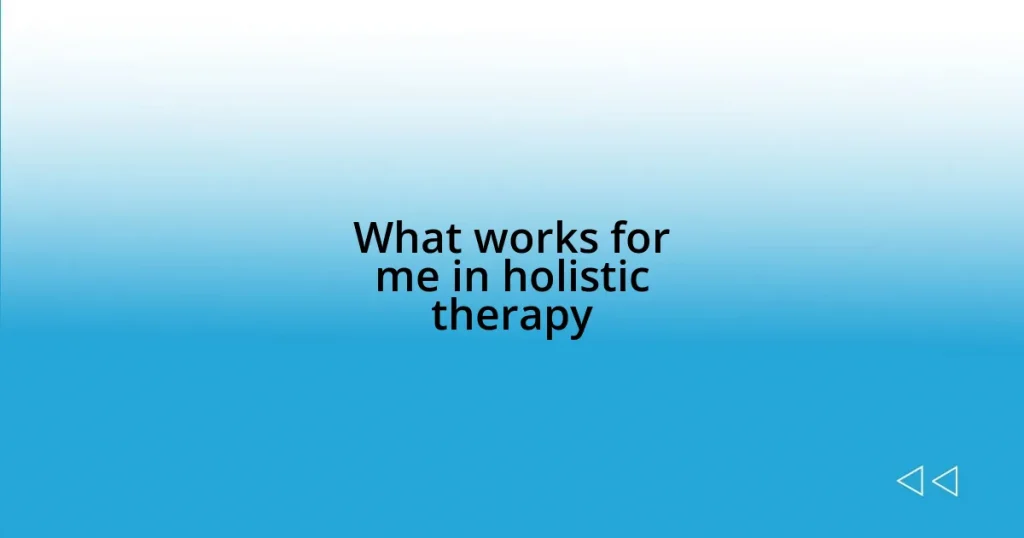Key takeaways:
- Healthy emotional expression involves recognizing and communicating feelings constructively, fostering deeper connections with others.
- Emotional awareness is crucial for understanding feelings, enhancing clarity, connection, decision-making, stress reduction, and personal growth.
- Mindfulness practices, creative outlets, and effective communication techniques (like “I” statements) are essential for navigating and expressing emotions healthily.
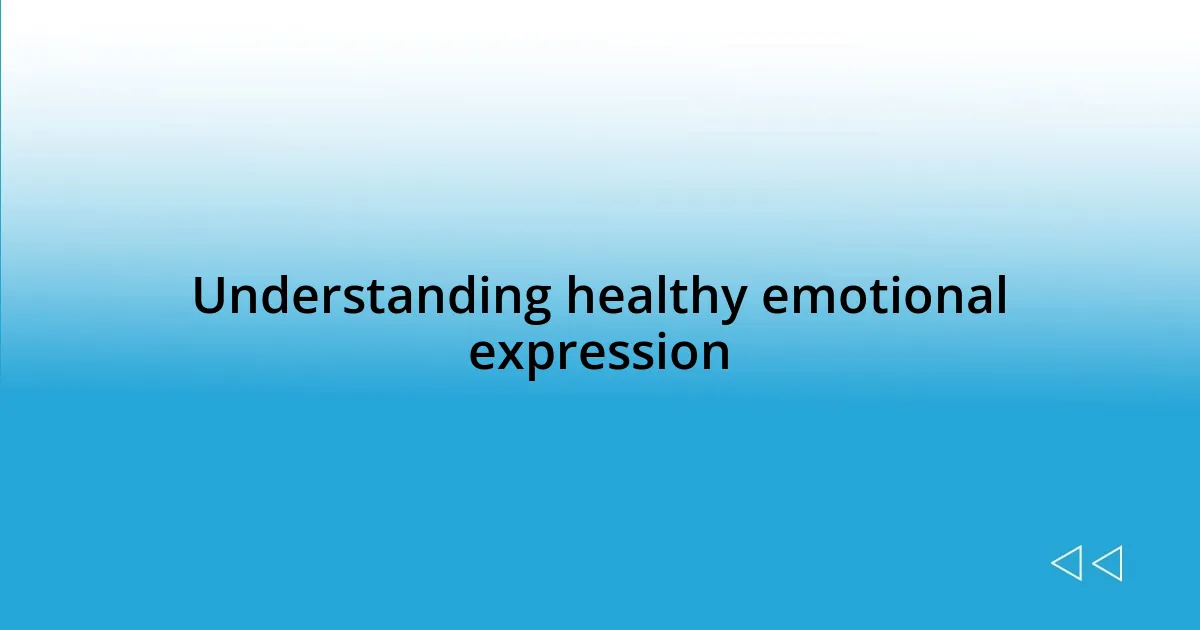
Understanding healthy emotional expression
Healthy emotional expression is all about recognizing and communicating our feelings in a constructive way. I remember a time when I felt overwhelmed by stress at work. Instead of bottling it up, I decided to confide in a close friend. That simple act of opening up not only relieved my anxiety but also strengthened our bond. How often do we hold back our feelings, thinking we’ll burden others or appear weak?
I’ve learned that expressing emotions doesn’t mean flooding others with negativity; it’s about sharing our experiences authentically. For example, when I faced disappointment recently, I took a moment to journal about my feelings instead of lashing out at others. This practice taught me that processing my emotions privately first allows me to present a more balanced perspective when discussing my feelings with friends or family. Don’t you think journaling could be a powerful tool for understanding our emotions better?
Ultimately, healthy emotional expression involves both vulnerability and clarity. When I tell my loved ones how their actions affect me, I focus on ‘I feel’ statements instead of blaming them. This approach fosters understanding and helps others see things through my eyes, encouraging deeper connections. Have you ever considered how your word choice impacts conversations about emotions? The way we express ourselves can transform a mere exchange into an opportunity for growth.
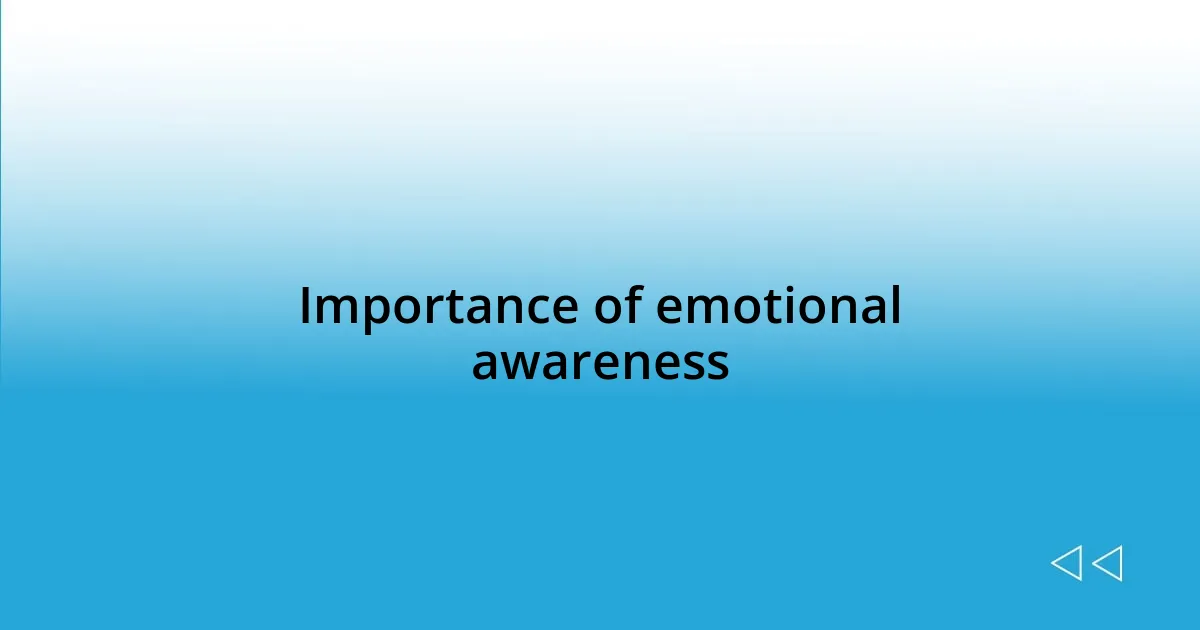
Importance of emotional awareness
Understanding the importance of emotional awareness has truly transformed the way I approach my feelings. Being emotionally aware means recognizing and understanding my emotions as they arise. I recall a day when I felt an inexplicable sense of irritation bubbling up. Instead of brushing it off, I paused to reflect. I realized I was frustrated not with my surroundings but with a specific situation at work. By acknowledging this, I could address it directly rather than let it fester.
Here are some key benefits of emotional awareness:
- Clarity: It helps clarify what I’m really feeling, preventing misunderstandings.
- Connection: Being aware of my emotions fosters better connections with others.
- Decision-making: It improves my decision-making since I’m able to approach situations more thoughtfully.
- Stress reduction: Recognizing my emotions can lower stress levels by preventing emotional build-up.
- Personal growth: It opens the door to deeper self-reflection and growth.
Emotional awareness is a vital first step in expressing emotions healthily. Without it, I often find myself reacting impulsively instead of responding thoughtfully. I had an experience where, during a disagreement with a friend, I realized I was angry because of past insecurities surfacing. Acknowledging that allowed me to communicate my needs clearly, ultimately strengthening our friendship. Isn’t it fascinating how understanding our emotions can radically change our interactions?
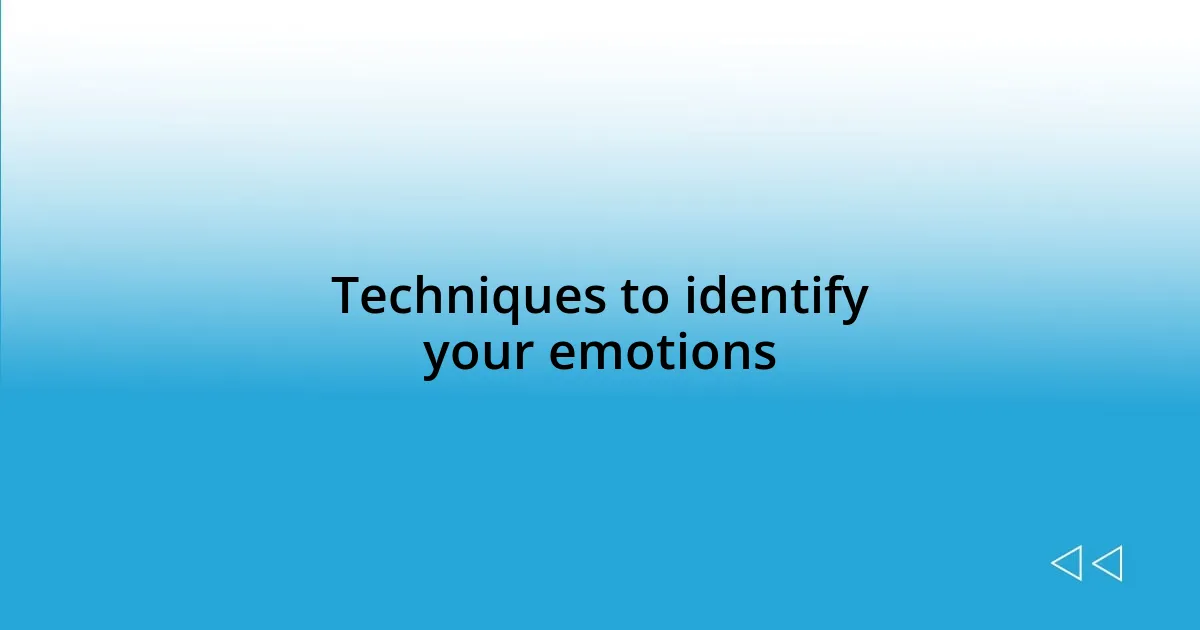
Techniques to identify your emotions
Recognizing emotions starts with self-reflection. I often find it helpful to set aside a few moments in my day to check in with myself. Sometimes I sit quietly with a cup of tea, asking, “What am I really feeling right now?” This practice has led to unexpected insights. For instance, after a challenging meeting, I realized that my frustration came from feeling unheard rather than the actual content of the discussion. This clarity helped me express my feelings calmly, rather than in a reactive manner.
Another effective technique is using emotion charts, which list various feelings and their descriptions. I remember the first time I used one; it felt like a light bulb went off in my head. Instead of simply saying, “I’m upset,” I could pinpoint that I felt “disappointed” or “overwhelmed.” These specific labels made it easier to share my emotions with others and start conversations that led to deeper understanding. Have you ever considered how labeling your emotions might change your communication with others?
Another approach has been utilizing mindfulness practices, like meditation or deep breathing. I’ve had moments where just a few breaths helped me step back and observe my feelings without judgment. I recall a hectic afternoon when I felt both anxiety and excitement. By simply sitting still and acknowledging these emotions, I could see that my anxiety was tied to fear of the future, while my excitement stemmed from new opportunities. This distinction allowed me to navigate my feelings more effectively. Isn’t it fascinating how slowing down can offer such profound insights?
| Technique | Description |
|---|---|
| Self-reflection | Taking time for quiet introspection to recognize and name emotions. |
| Emotion charts | Using visual aids to identify and categorize feelings accurately. |
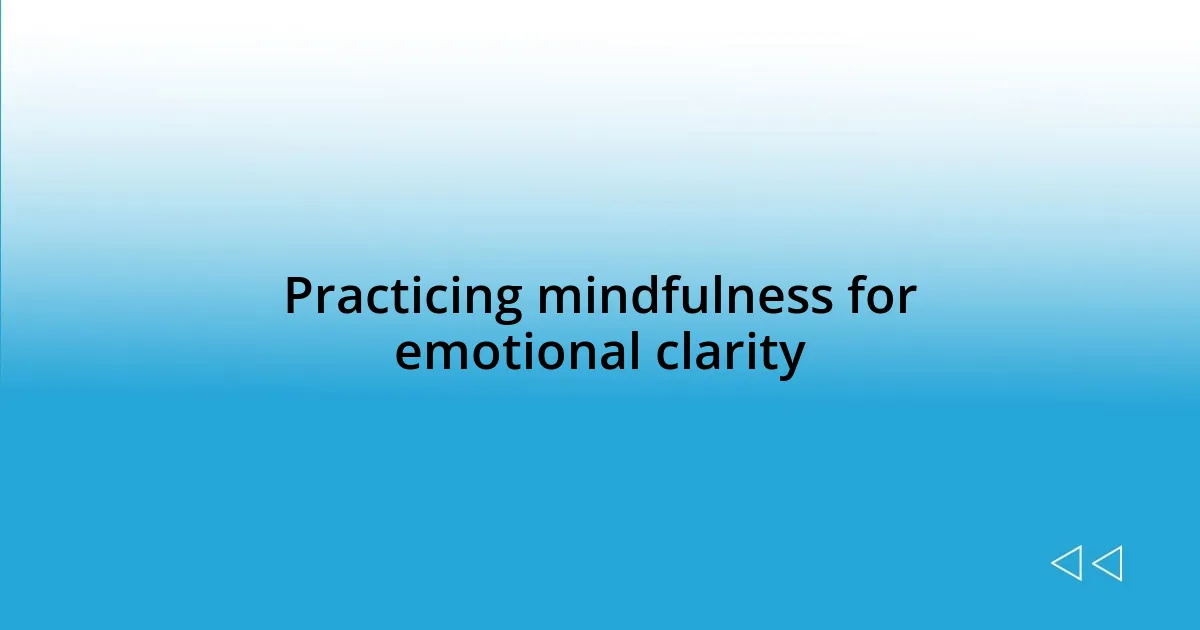
Practicing mindfulness for emotional clarity
Mindfulness has become my go-to tool for achieving emotional clarity. One day, during a particularly hectic morning, I took a moment to close my eyes and breathe deeply. This simple act helped me identify the stress stemming from my busy schedule, steering my focus back to the present moment instead of getting lost in worries about what was ahead. Have you ever noticed how just a few deep breaths can transform your mindset?
Engaging in mindfulness meditation has also allowed me to observe my thoughts and feelings without getting swept away by them. I remember sitting on my living room floor, feeling overwhelmed by various responsibilities. Instead of drowning in a sea of “what-ifs,” I practiced recognizing those feelings as they arose. I told myself, “These feelings are temporary. They don’t define me.” That realization empowered me to respond thoughtfully rather than react impulsively.
Journaling is another mindfulness exercise I cherish. After a long day, I often jot down my emotions, which provides an outlet for my thoughts. One evening, I found myself grappling with feelings of inadequacy. Writing about my day helped me articulate my frustration, transforming it into clarity. It amazed me how the act of writing became a catalyst for understanding my emotional landscape. Have you tried putting pen to paper to explore your emotions? It might just unlock a deeper understanding of yourself.
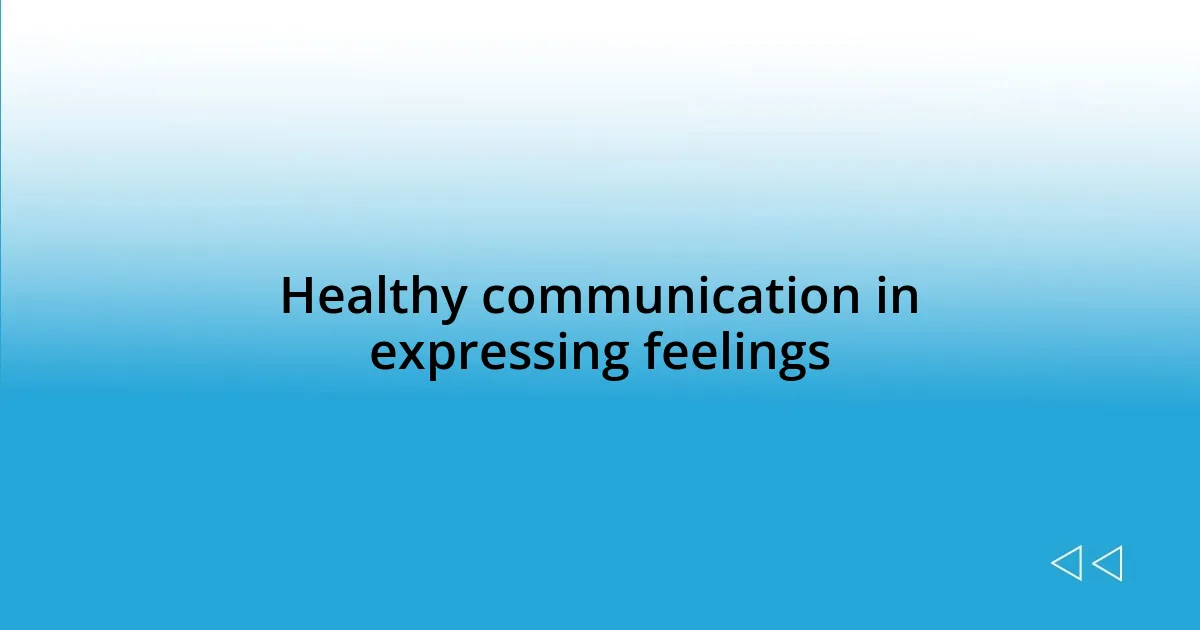
Healthy communication in expressing feelings
Healthy communication is all about expressing feelings clearly and constructively. When I communicate my feelings, I focus on using “I” statements, which allow me to take ownership of my emotions. For instance, instead of saying, “You make me angry,” I express, “I feel angry when you interrupt me.” This shift makes the conversation less accusatory and opens the door for understanding. Have you ever noticed how rephrasing your thoughts can change the direction of a discussion?
Active listening plays a crucial role in healthy communication too. I remember a time when a friend was sharing her frustrations, and I made it a point to listen without immediately offering my advice. By reflecting back what she said, I was able to help her feel heard and validated. This practice not only strengthened our bond but also encouraged her to express her feelings more openly without fear of judgment. Isn’t it empowering to create a space where others can feel safe to share their emotions?
Another important aspect of expressing feelings healthily is timing and context. I’ve learned that bringing up sensitive emotions during high-stress moments often leads to miscommunication. Once, I attempted to discuss my feelings when my partner was busy with work, and it didn’t go well. I’ve found that waiting for a calm, private moment results in more productive conversations. What have been your experiences with timing in emotional discussions? It’s something worth considering when aiming for healthy communication.
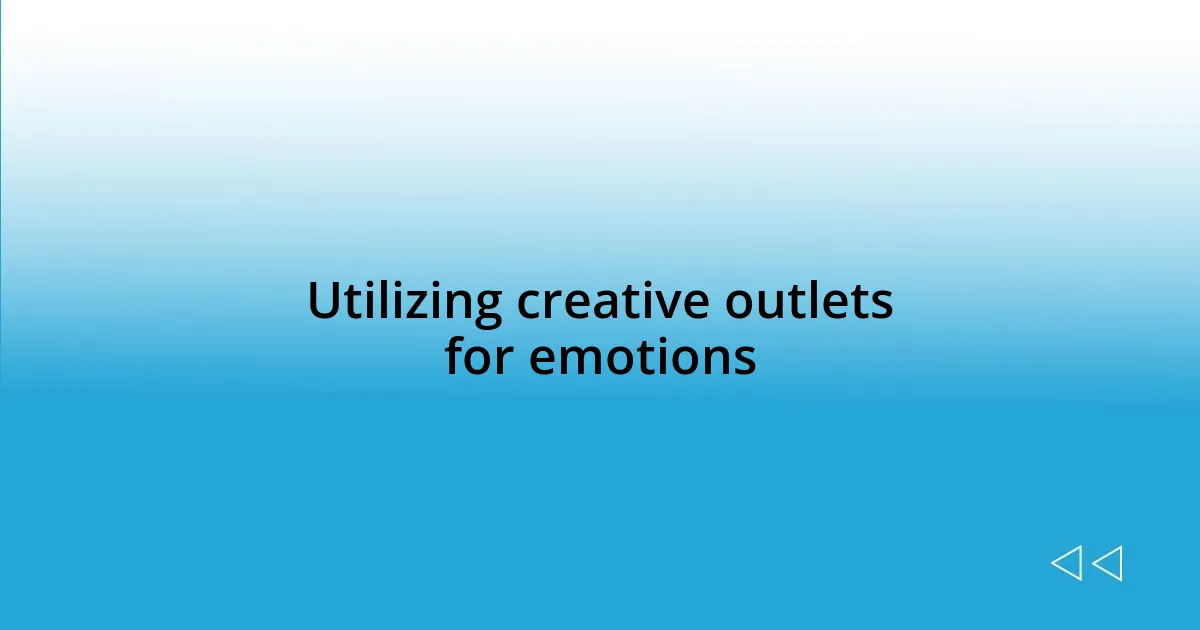
Utilizing creative outlets for emotions
Utilizing creative outlets for emotions can be a game-changer in how I navigate my feelings. For instance, when I find myself engulfed in sadness, I turn to painting. One afternoon, while splashing colors on canvas, I felt transformed. Each brushstroke allowed me to release pent-up emotions, reflecting my internal turmoil in vivid hues. Have you ever felt your emotions come alive through art?
Music is another outlet that speaks to my soul. The other day, I decided to pick up my guitar, and strumming a few chords felt like a weight lifting off my shoulders. It’s remarkable how melodies can express what words sometimes cannot. When I play, I channel my frustrations and anxieties into the rhythms, creating a sense of calm. Have you found your own soundtrack for emotions?
Lastly, I recently discovered the therapeutic power of creative writing. Late one night, as I penned down my thoughts in a story, I found a way to transform my struggles into characters and plots. The experience was cathartic, almost like unraveling a tangled web of feelings. It dawned on me that through storytelling, I could make sense of my emotions while also connecting with others. Isn’t it fascinating how creativity can transform chaos into clarity?




